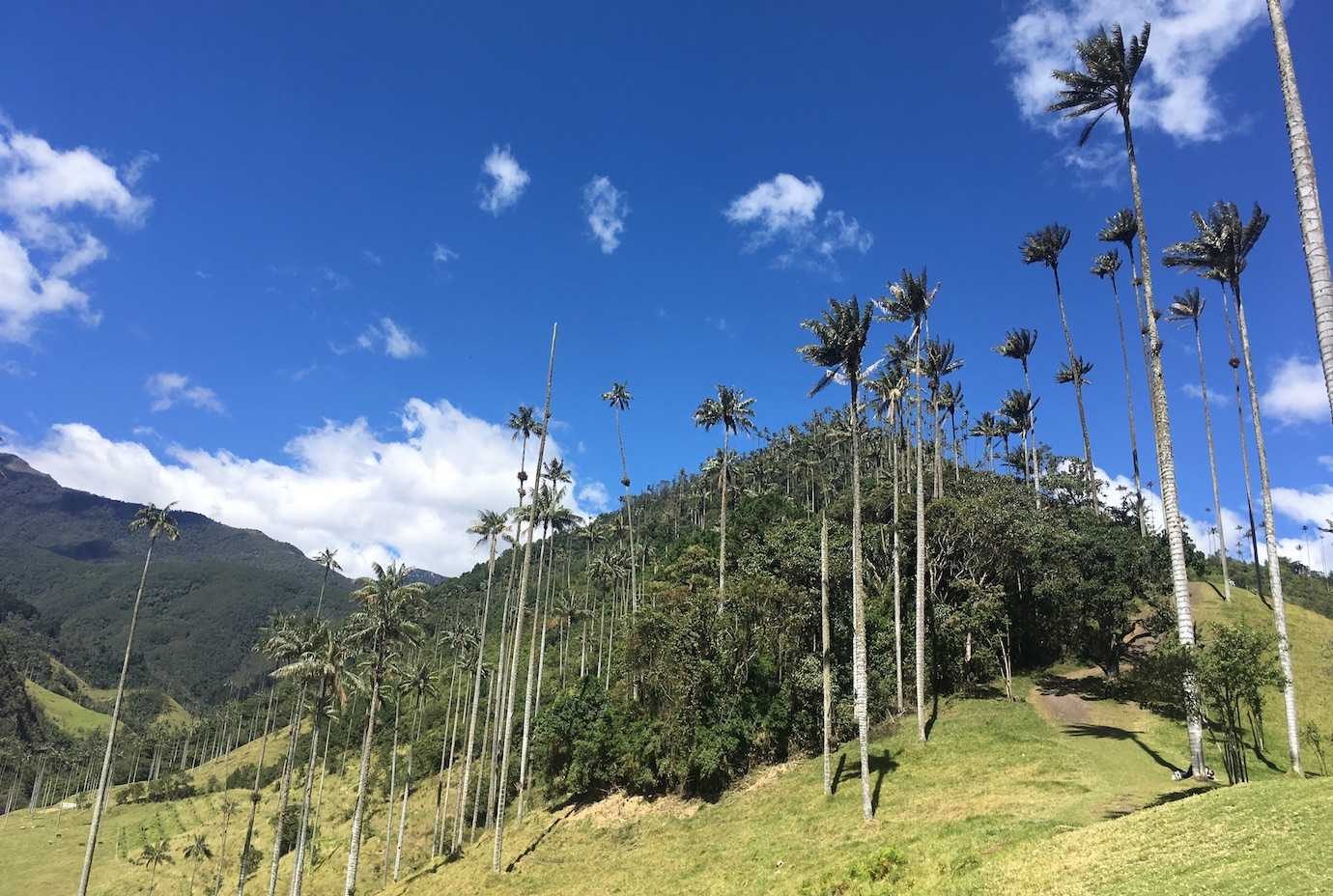
Salento is a small colourful town in Colombia’s coffee region and home to the beautiful Cocora Valley.
Day One – Valle de Cocora
Valle de Cocora is a lush green valley full of towering wax palms. I was really keen to see this unique landscape for myself!
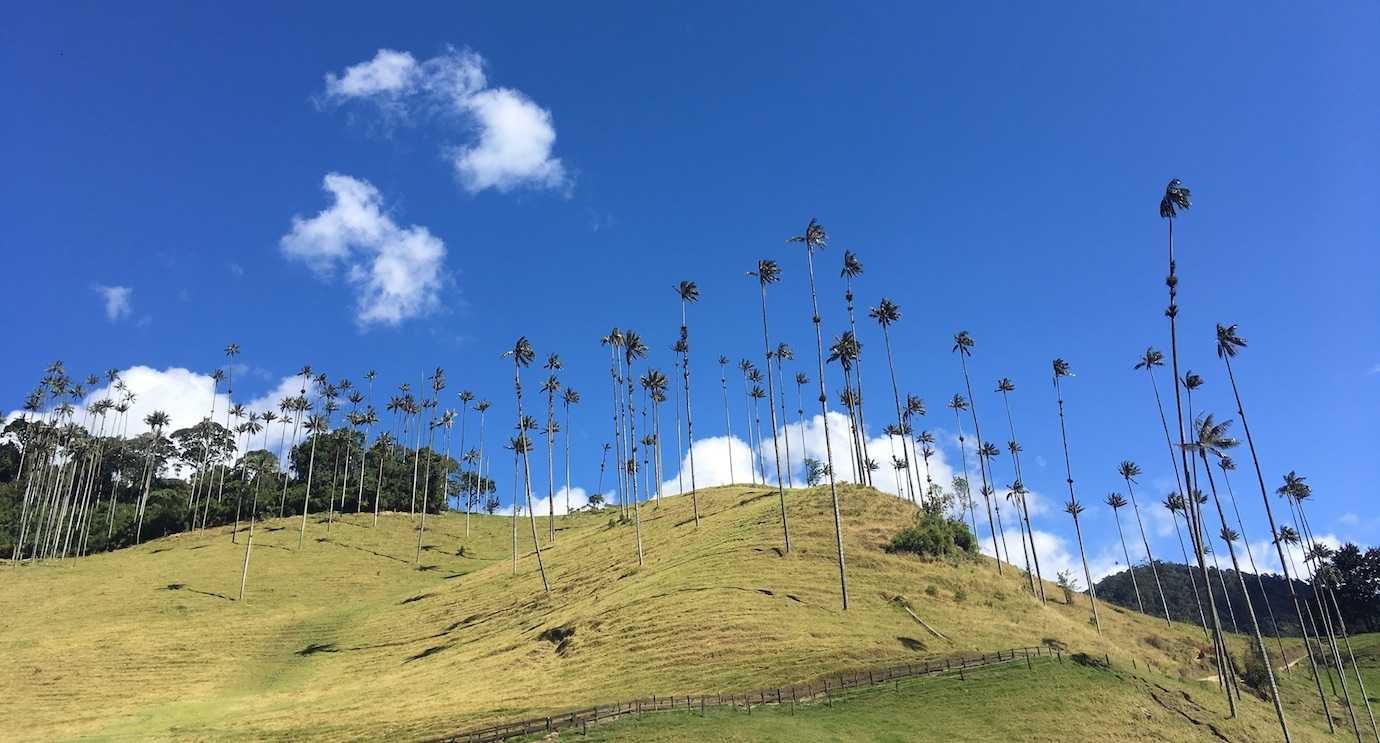
Getting there: Getting to Valle de Cocora is easy. In Salento’s main square there are jeeps (Willy’s jeeps) waiting to drive you to the valley. They leave on the half hour every hour (first one leaves at 6.30am) or whenever they’re full (two or three people will be standing on the back bumper and holding on for the ride!). It costs $8000COP (£2 approx) for a return ride and is about a half an hour drive. The last jeep back from Cocora Valley to Salento is at 6.30pm.
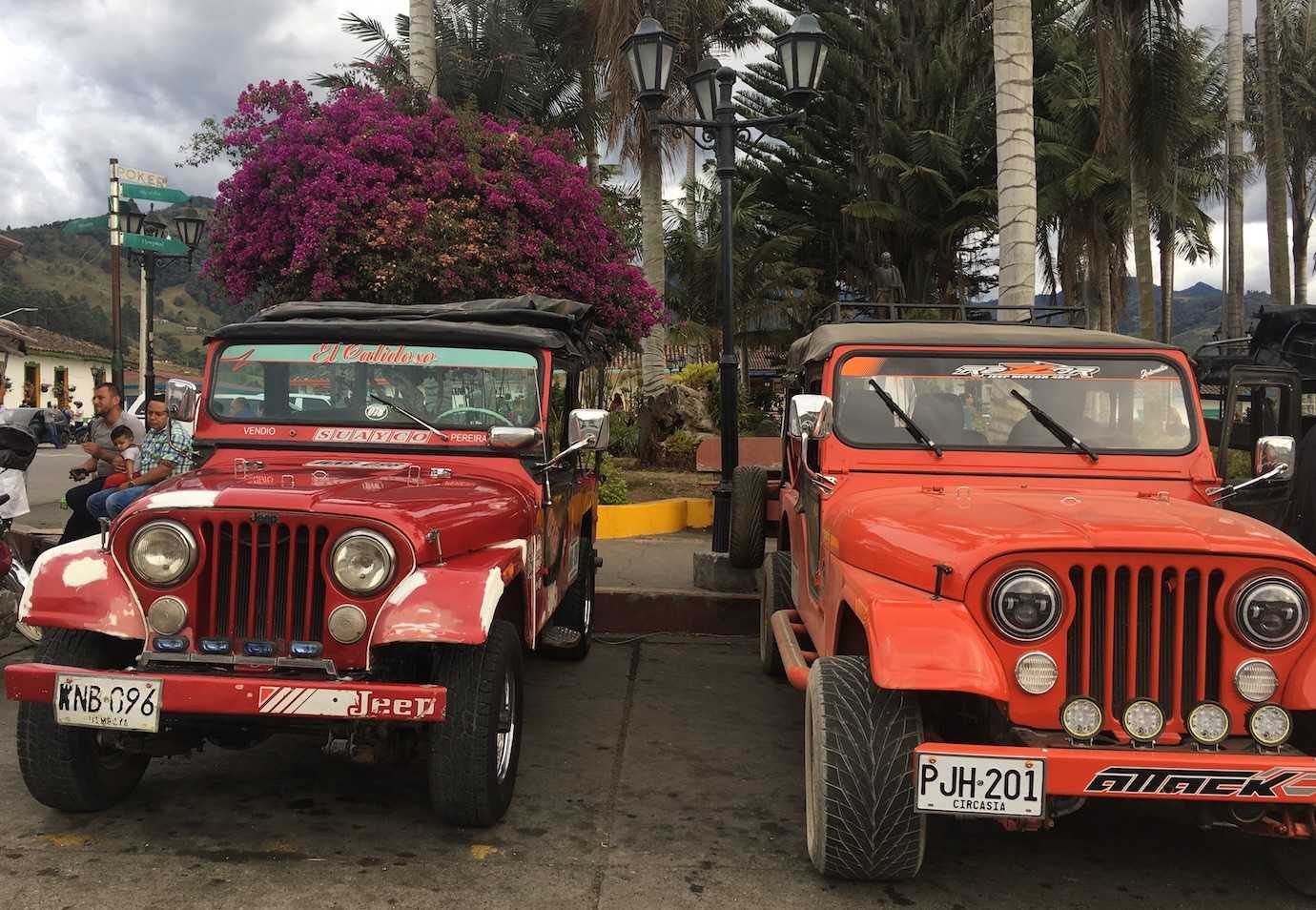
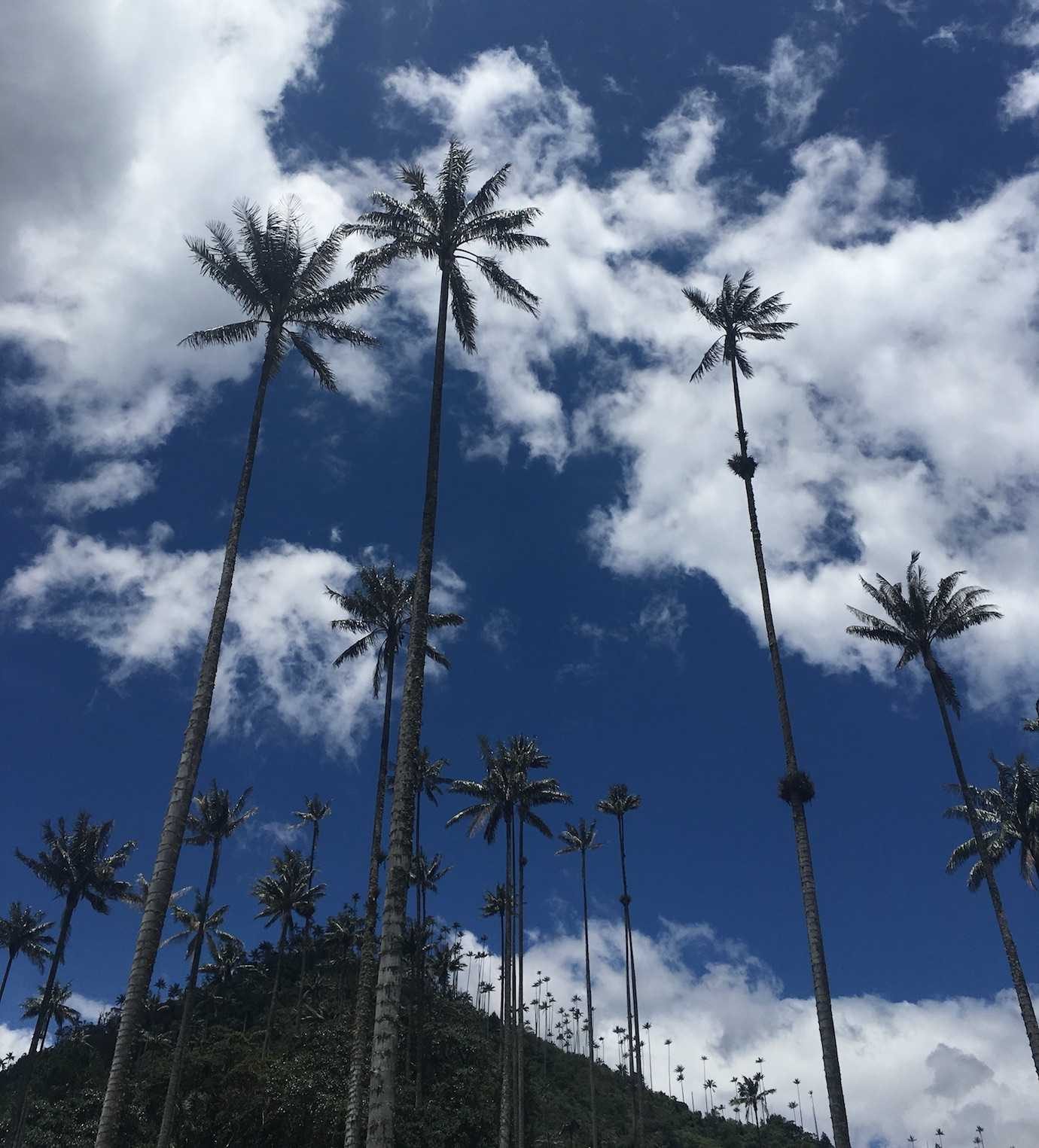
Tip: The Valle de Cocora hike is a loop so can be walked clockwise or anti-clockwise. I recommend going anti-clockwise and go through the blue gate first. It’s harder – there’s a steep uphill section – but you finish in the valley where you can spend as long as you like. It’s more rewarding!
I arrived to Valle de Cocora around 9am and started the walk with Isabelle and Sabethi, two lovely German girls I’d met in the jeep. We went anti-clockwise, going through the blue gate.
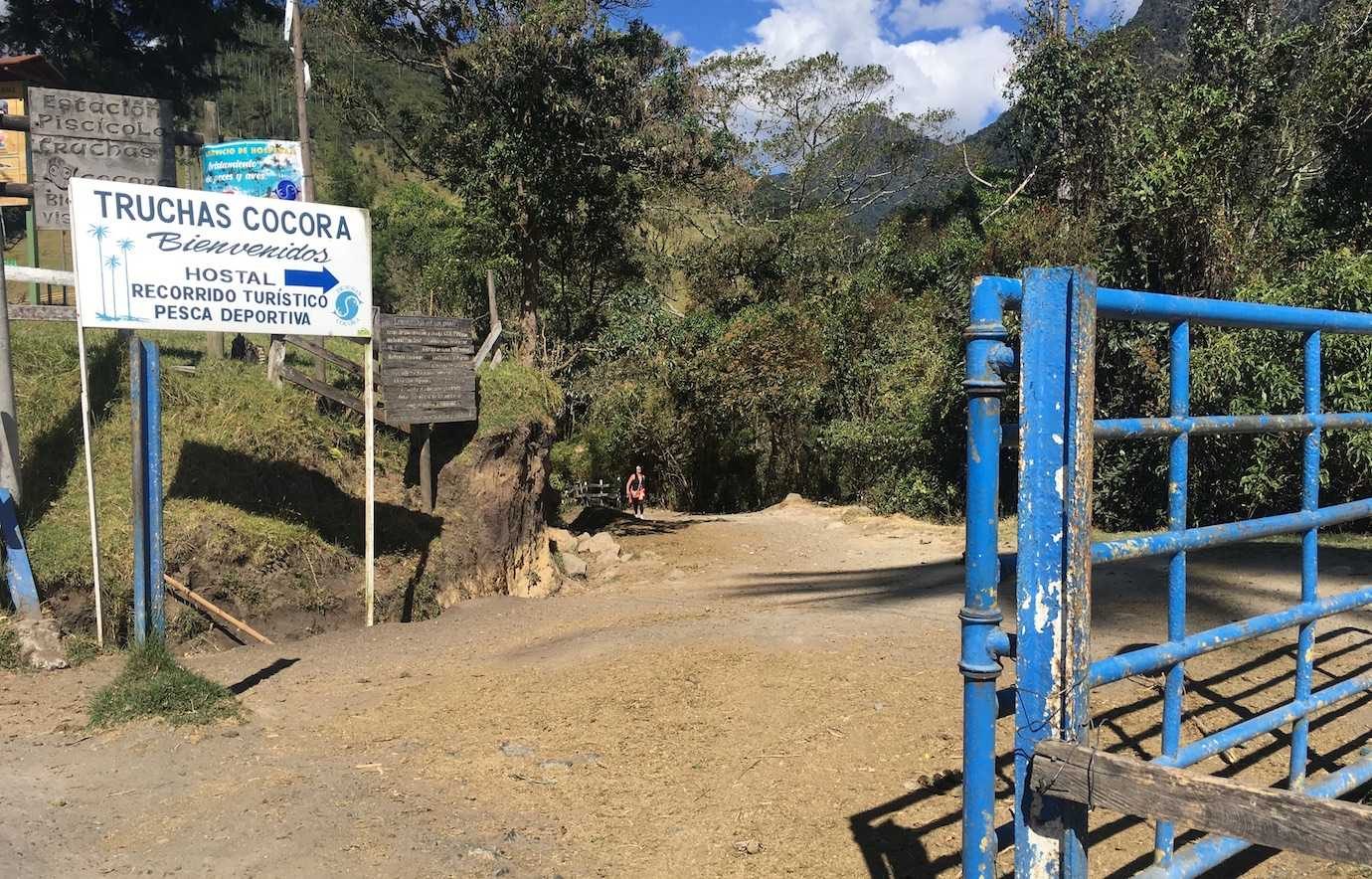
Note: 10 minutes after the blue gate, you’ll reach the first of the walk’s two toll booths. We paid 3000COP each to pass the gate and got a wristband.
For the first part of the walk, we walked along the bottom of the valley, looking up at the small outlines of the palms on the hill. It’s impossible to stray off the path as this first part is bordered by a fence. I imagine to stop people walking on private land.
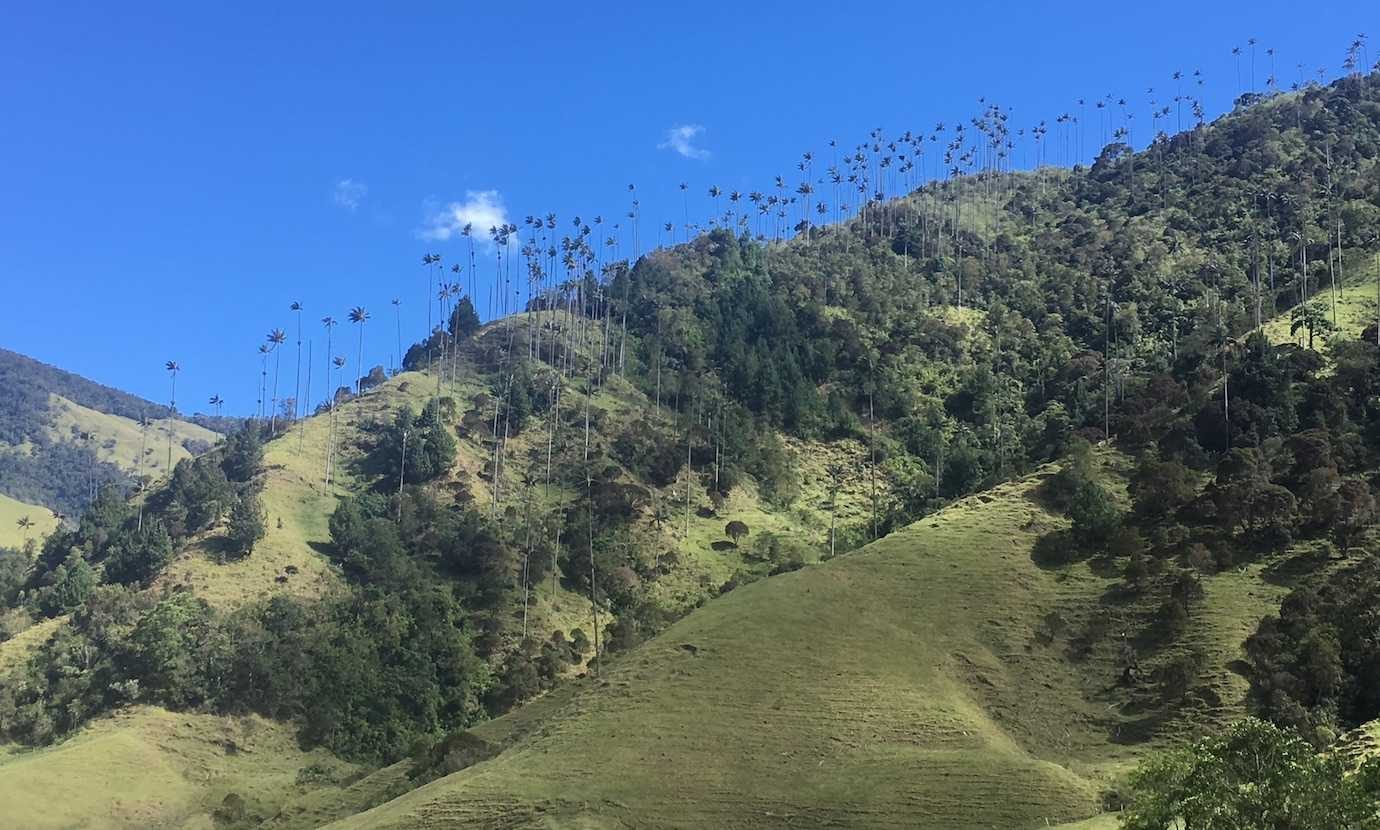
The second part of the walk is through the forest. It involves crossing several wooden bridges (one person at a time!) and the hardest bit – a steep uphill climb to the top of the hill and one of the viewpoints.
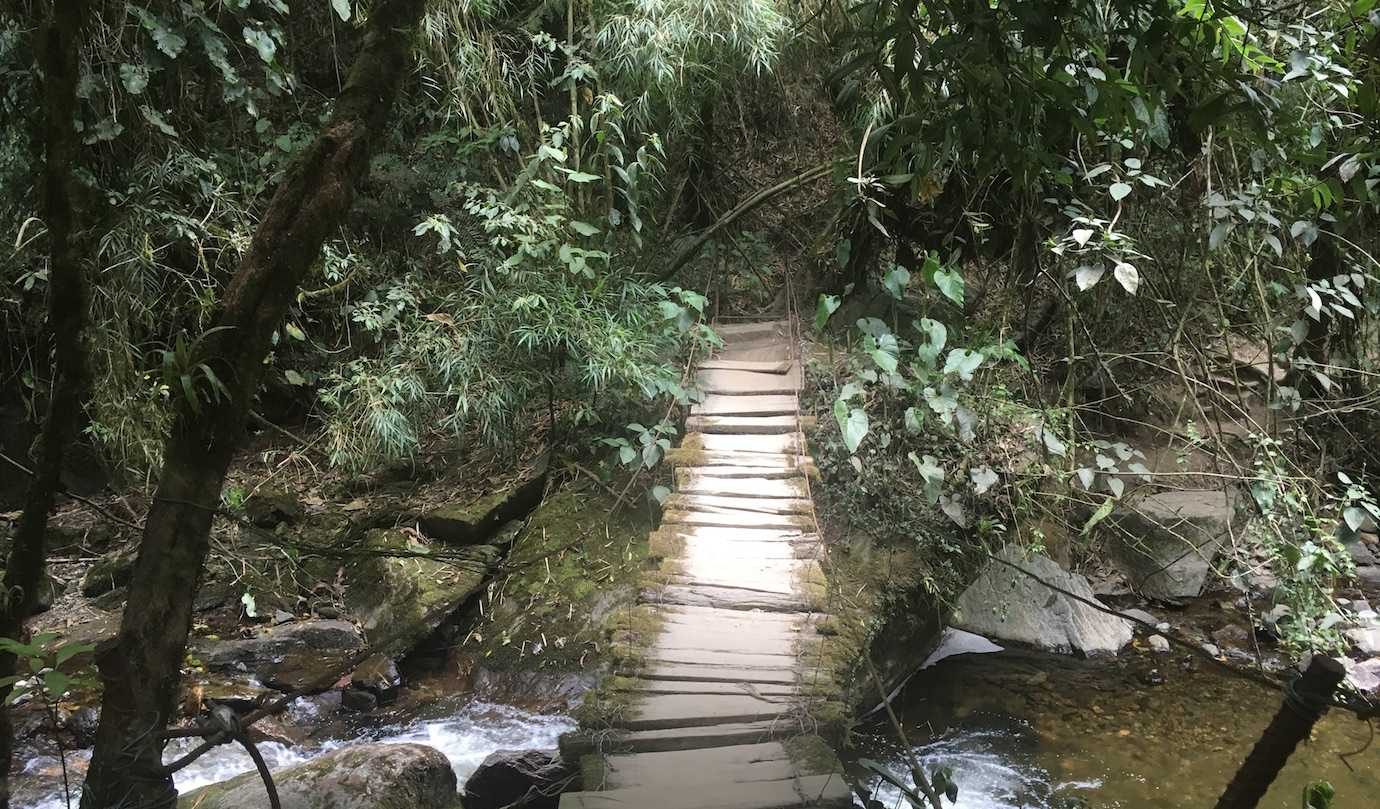
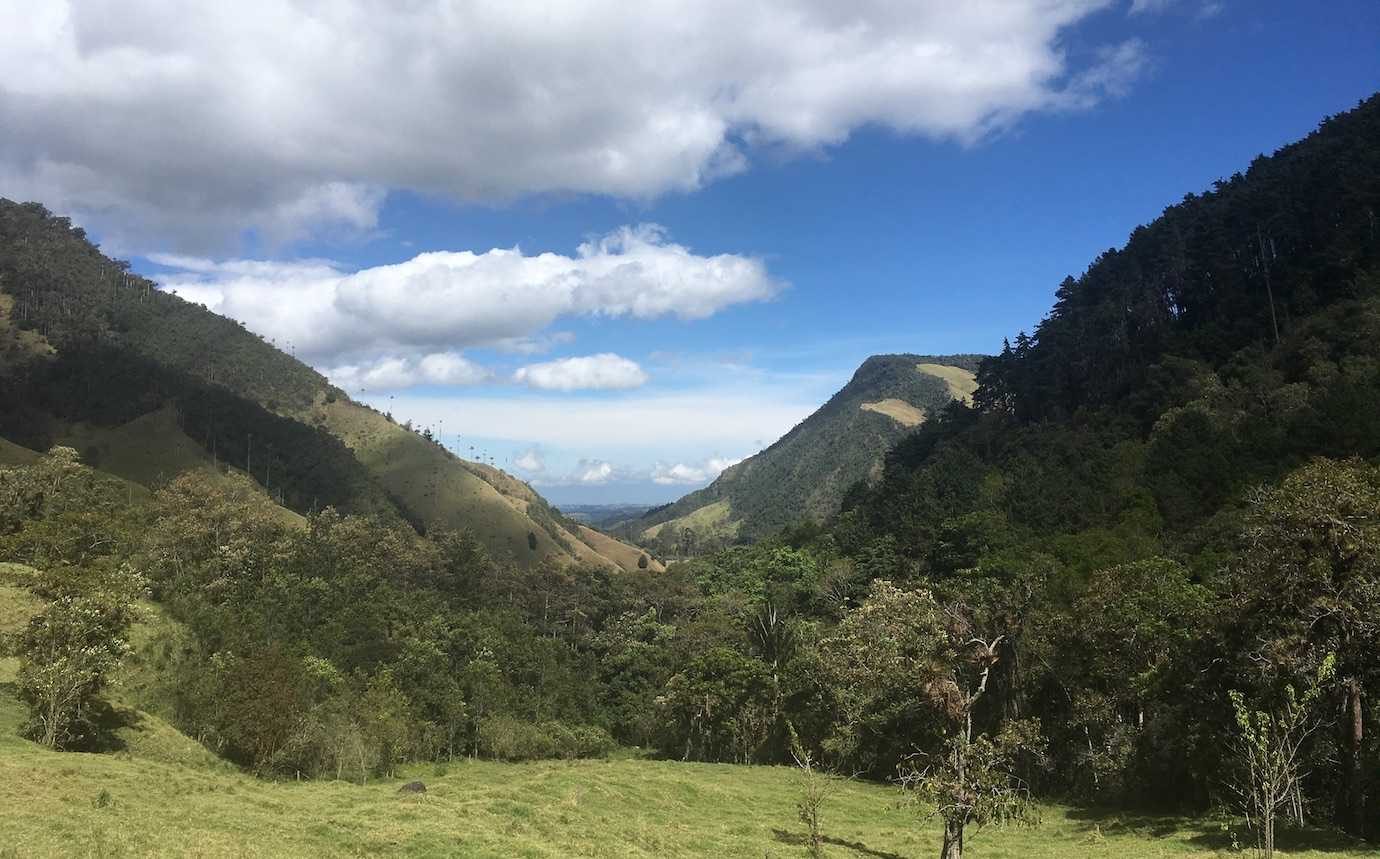
From there, the third section is a gentle downhill walk to the wax palms and various viewpoints.
Note: There’s a second entrance fee to pay, 4000COP (£1 approx), as you walk down. You’ll get another wristband!
The palms are so cool! I felt tiny surrounded by the valley’s sky high palms – they can reach 60m high!
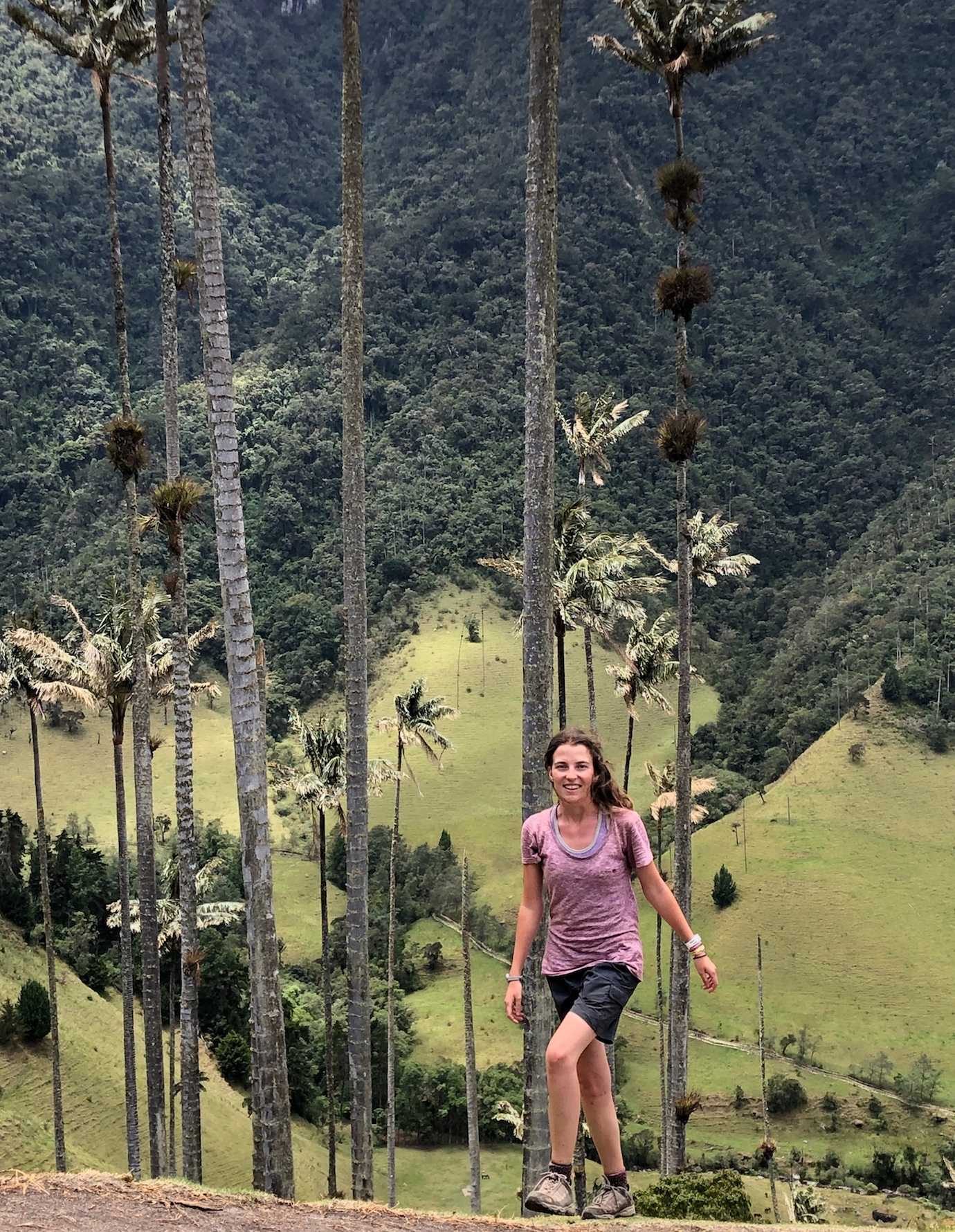
Walking down meant we could appreciate the views more! We spent around two hours lying amongst the palms in the sunshine! A great day! I also lost my suncream, no idea how!
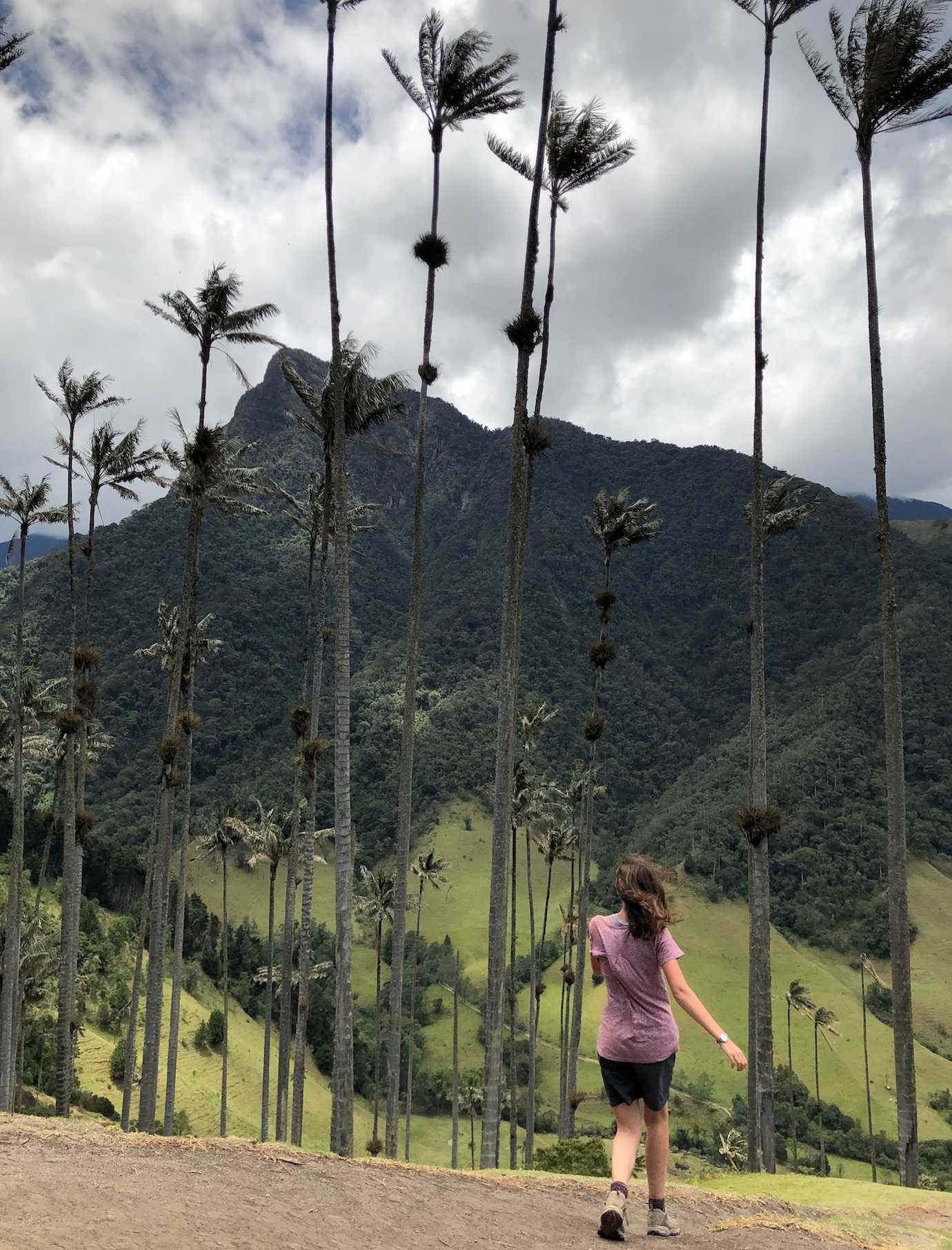
Before starting the walk I’d heard people saying it takes 6hrs and is really tough. I was doing it straight after a night bus so I was slightly worried I wasn’t prepared. Having done it now, I can say I was more than fine.
Yes, the walk is steep at parts but it’s totally doable. Also, it’s not 6hrs of walking! We spent a lot of time at the viewpoints relaxing and enjoying the valley. I’d say the hike takes between 2-3hrs at a leisurely pace.
Tip: Take a layer or two with you! It was sunny when we were sat in the valley at the end. However, earlier on in the hike it was cloudy and, once stopped we got chilly quickly! Despite the sun, it was also pretty windy and a layer came in handy!
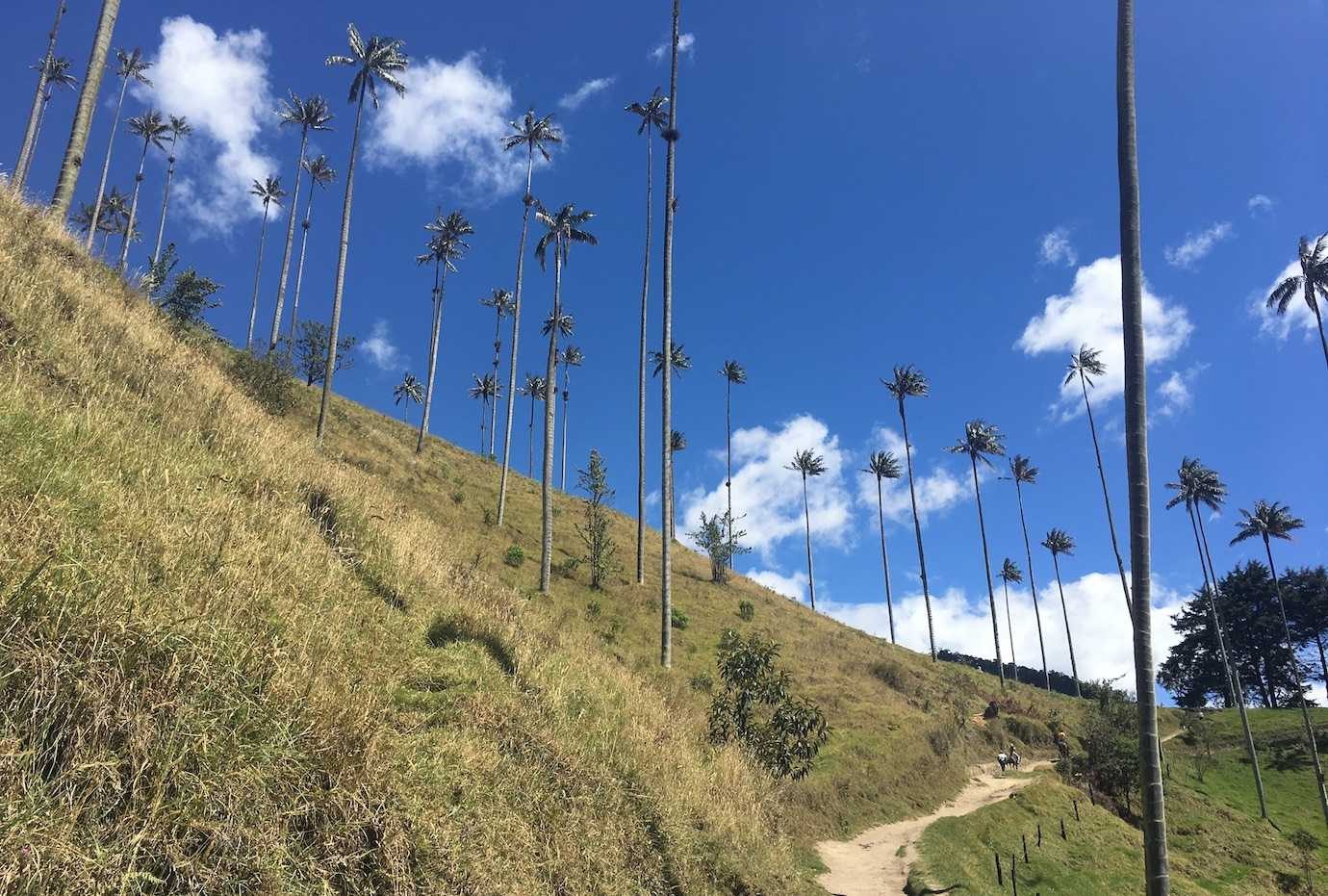
Note: I’d been advised to start early, getting a jeep around 7.30am. I went straight from my night bus to my hostel to drop my big rucksack and get myself ready for the day. I was ready for the 8.30am jeep as were many others. Walking the valley, I didn’t feel like it was overcrowded so I would go when the weather seems best. There’s enough space and palm trees for everyone!
With so many photos of Cocora Valley on Instagram and the internet, I felt it had the potential to be one of those places which would be underwhelming as a consequence of having seen photos before. I’m so happy it wasn’t the case – phew!!
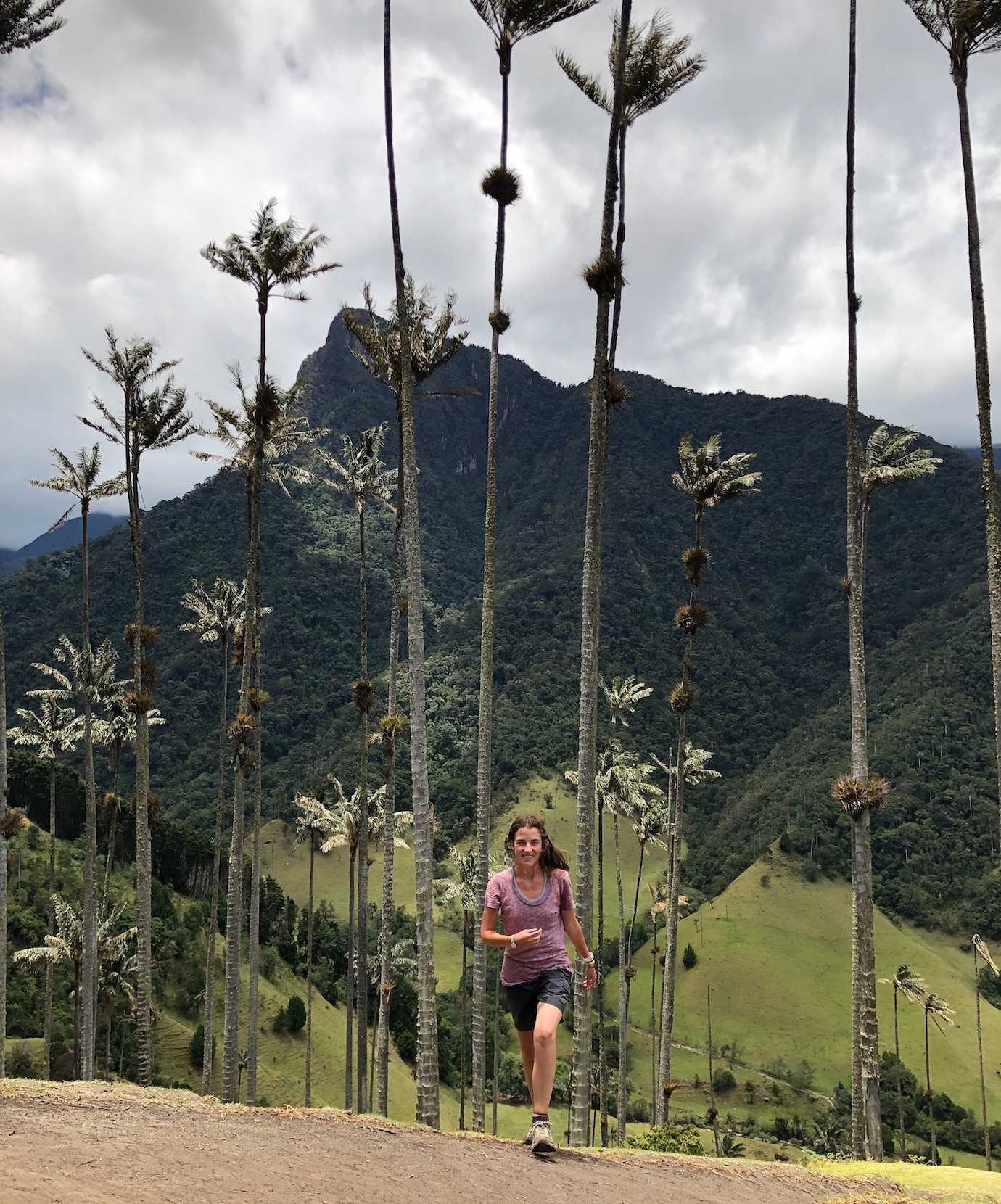
I loved Valle de Cocora and its sky high towering wax palms! The landscapes were stunning and I found it hard to leave!!
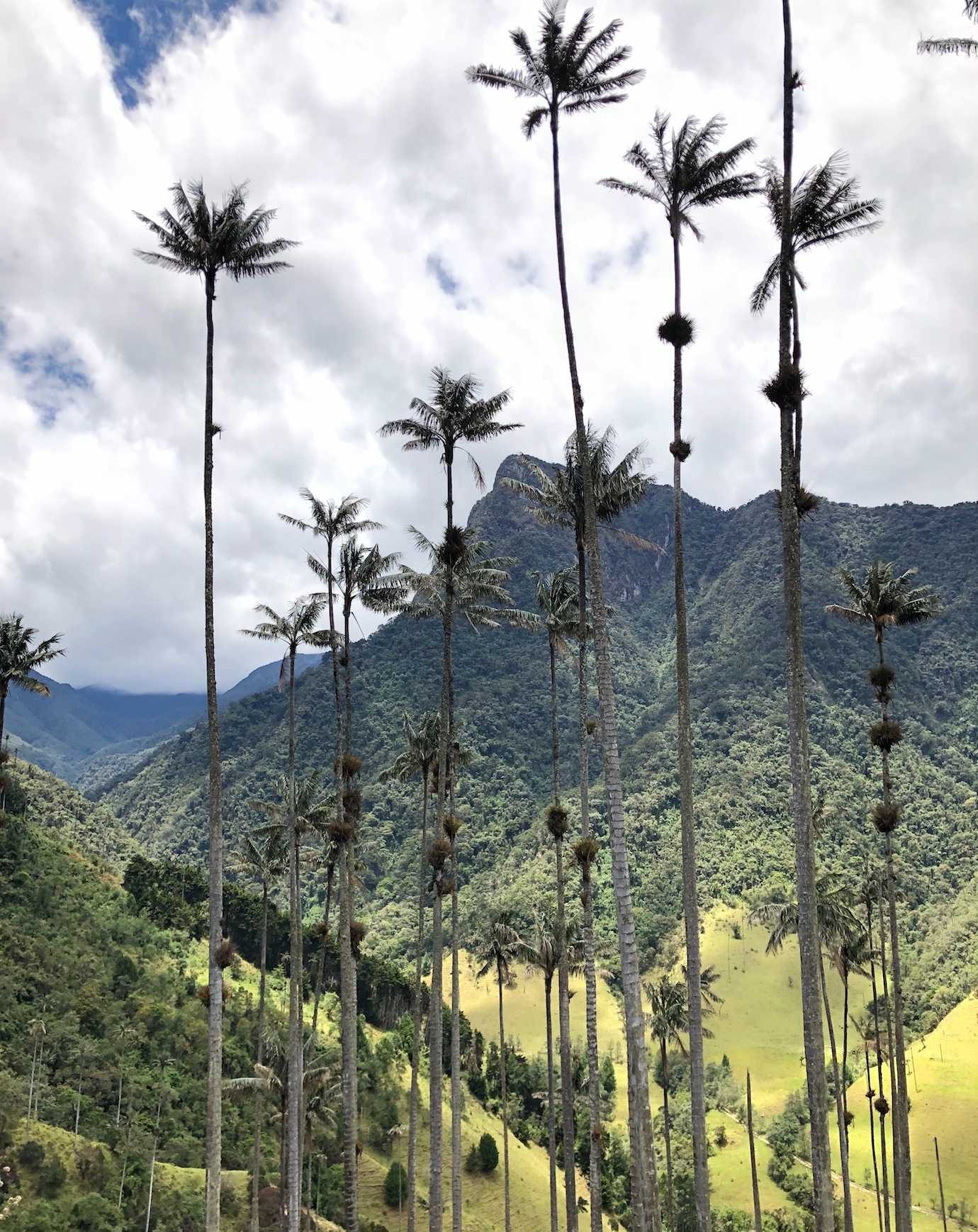
In the evening I went for dinner with the two German girls. We went to Brunch diner – and oh boy the nachos were fab as was the burger.
Day Two – Coffee farm
Having visited Cocora Valley on my first day in Salento (really happy I went the first day – the weather was much better!), I didn’t have any major plan for day two, aside from taking things slow.
I’d thought about doing a coffee tour; however as a non-coffee fan and drinker, I didn’t really fancy splashing out on an in-depth tour.
That said, I was in Colombia’s coffee region and, despite not liking the taste, I was interested in learning about the basics/overview to coffee producing.
So I walked to the coffee farms (around 45 minutes) on the outskirts of Salento, choosing to do my tour at Las Acacias farm.
Note: To reach the coffee farms, you can also take a jeep for 3000COP (approx £1) one way.
On arrival and before starting the tour, I was offered a coffee. As I’ve mentioned earlier, I’m not a coffee fan; however, I got a cup to try! Surprisingly I didn’t mind the taste! These might be my first steps to liking coffee! (There’s still a way to go!)
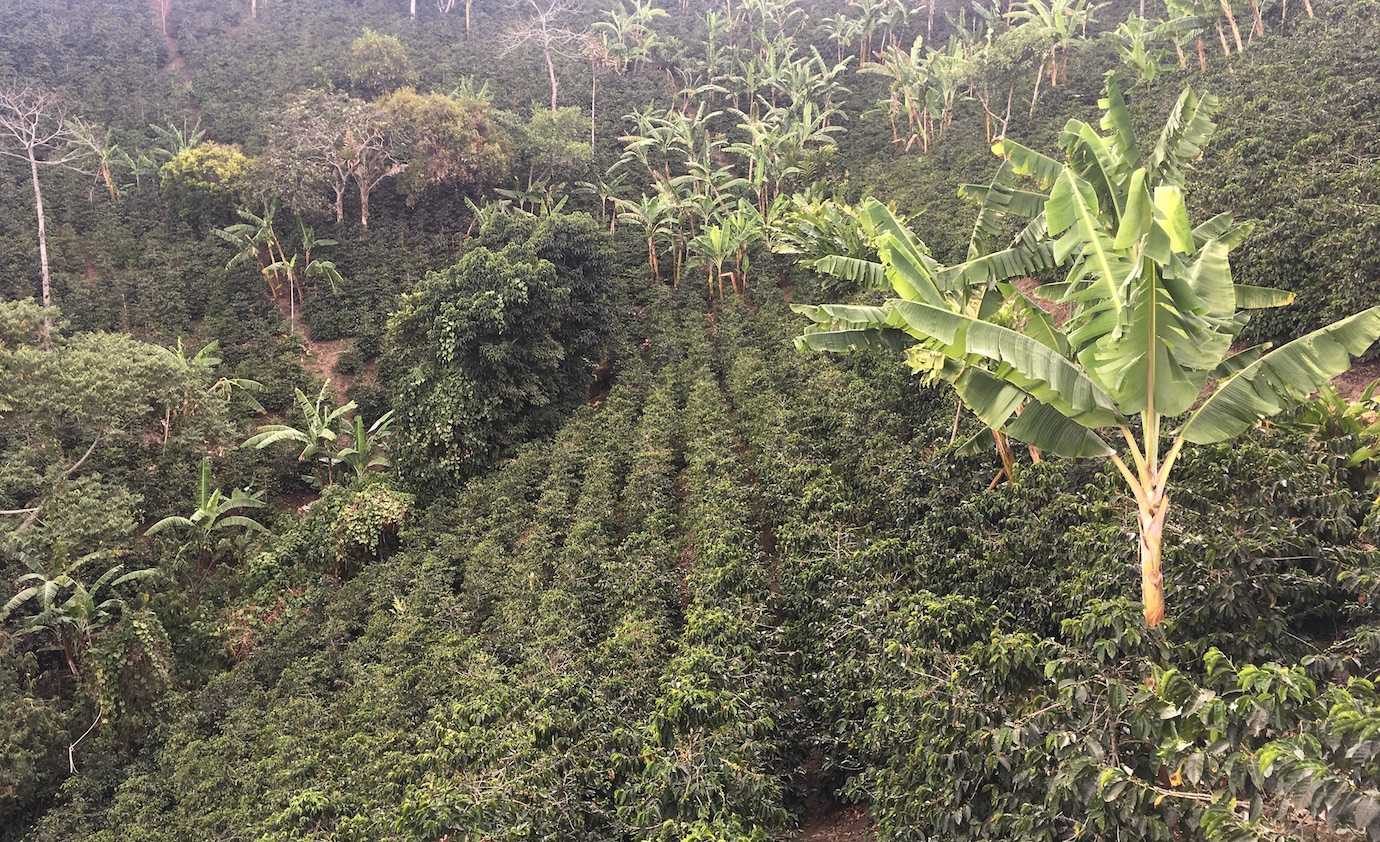
Tours are given in English and in Spanish. Depending on the number of people, you may have to wait for one to start. In my case, there was only one other person waiting when I showed up, an Argentinean guy, so to avoid waiting longer I went for the Spanish version. The perks of knowing another language! And I got to practice! It was basically a private tour – just the two of us!
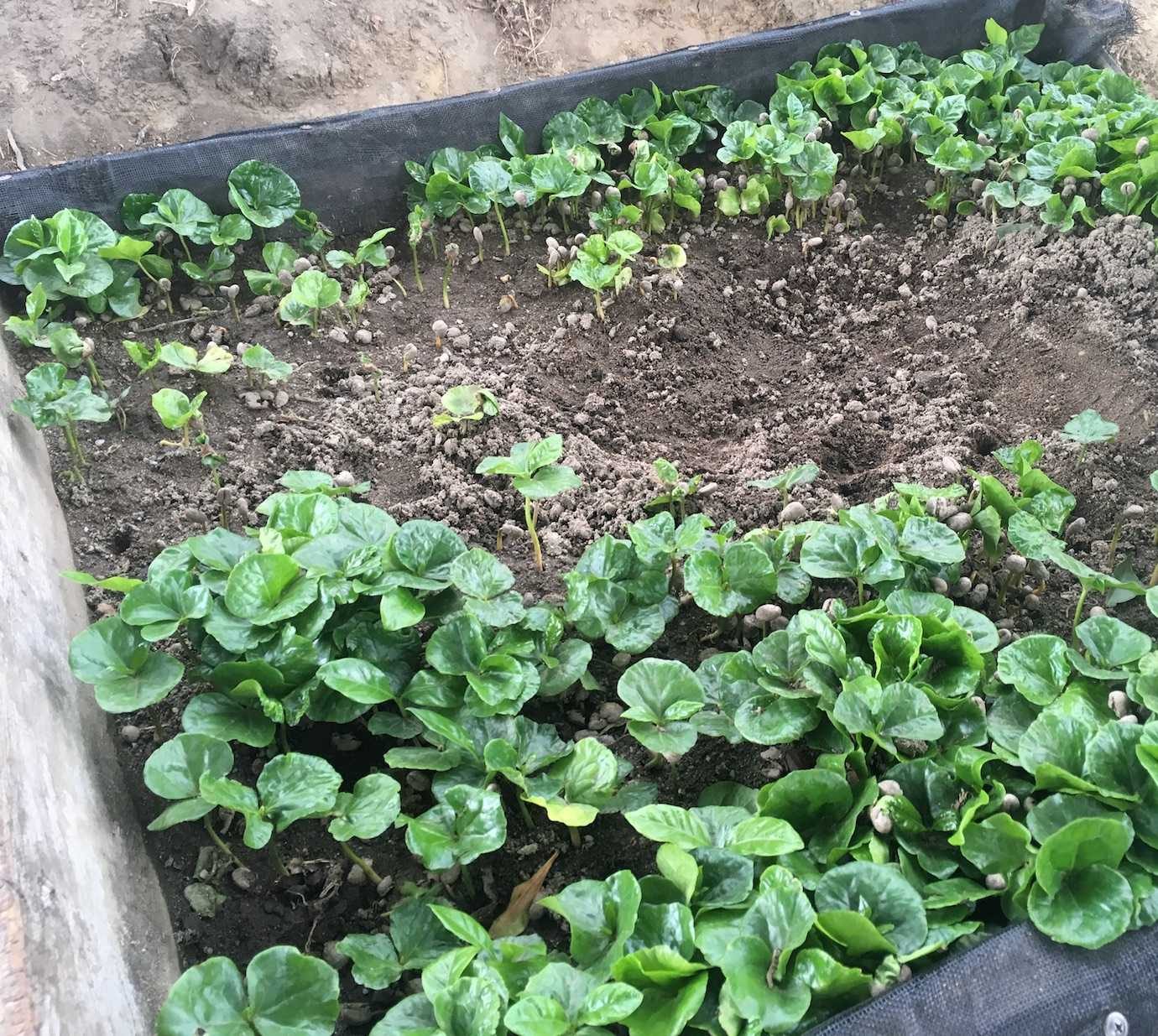
Our tour lasted around an hour and our guide, José, walked us around the farm explaining the coffee producing process from beginning to end. Here’s a few things I learnt:
- Coffee farms in Colombia only use beans of the Arabica variety.
- The harvest period is between April and June. Some bigger farms have two harvests, the second is September to November.
- Las Acacias also grow and produce a lot of other fruit and vegetables, to sell when coffee is out of season.
- The fruit is red when it’s ready to be collected.
- All coffee beans are collected by hand! At Las Acacias, it takes seven workers around twenty days to collect the beans. It’s hard hard work and workers are paid very little.
- A coffee plant takes three years before it produces beans.
- One coffee plant produces 1kg of coffee.
- To export coffee internationally, coffee farms have to produce at least 200 tonnes of coffee beans. Las Acacias only sells domestically for this reason!
- Colombia exports the best beans! The lower quality beans stay and are sold in the country.
I’m hoping these facts are right, and I’d love to say I remembered more, but I was busy paying attention to the Spanish! I really enjoyed the tour! It was informative, engaging and we were let loose to collect some coffee beans! I was very happy with it!
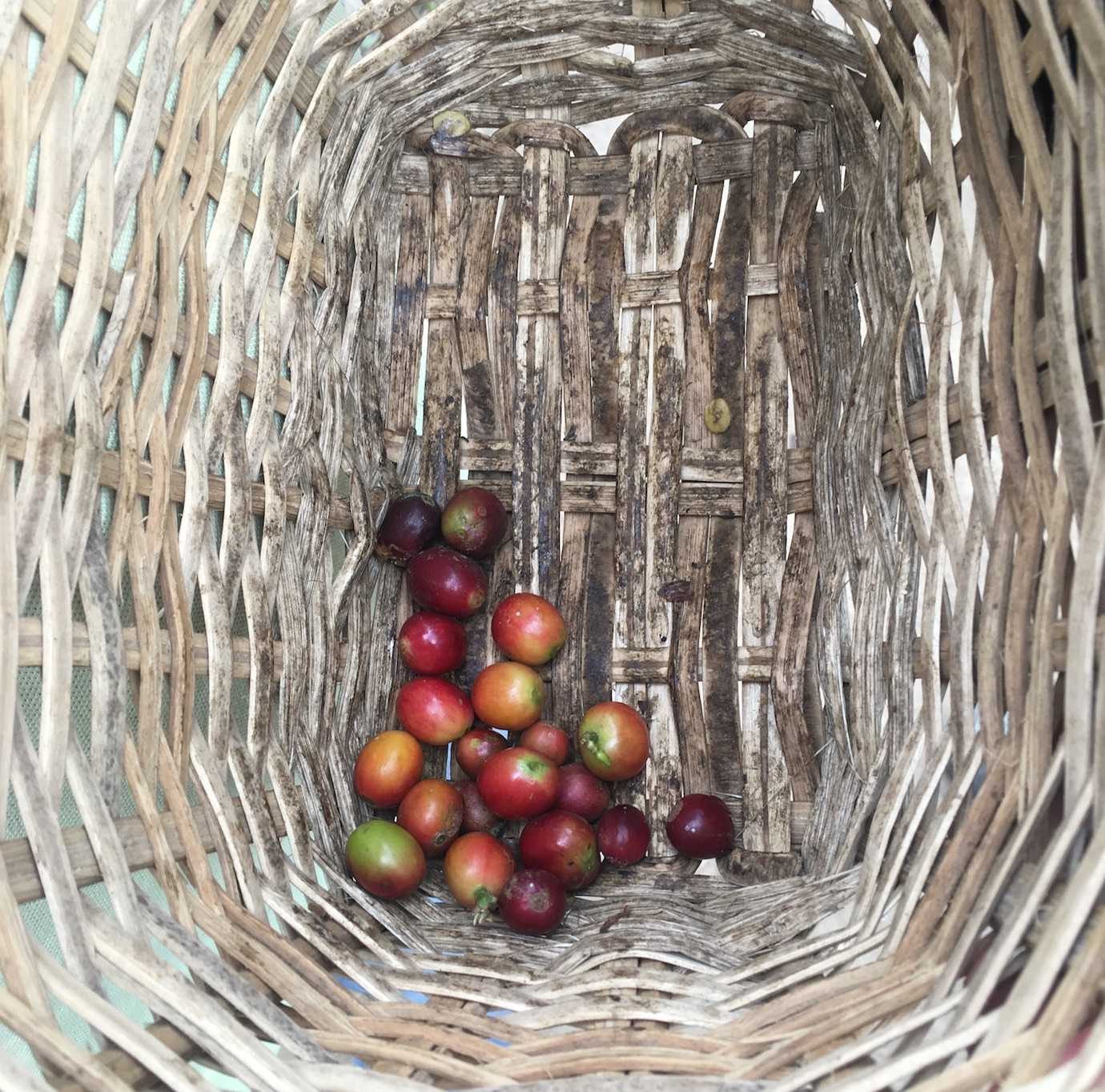
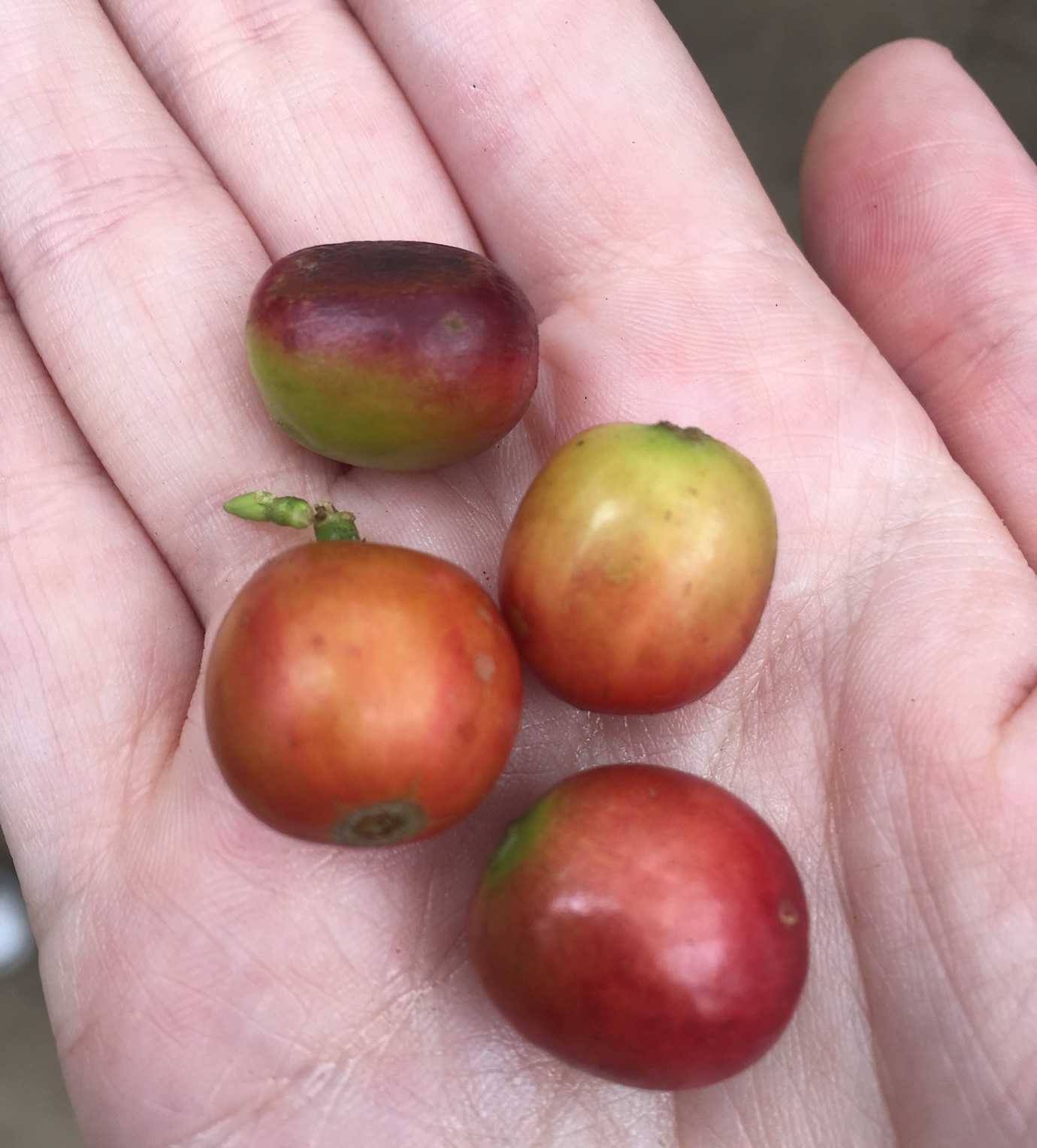
Cost: 12,000COP (£3 approx) for a tour.
Note: Further down the road is the much larger coffee farm, Finca El Ocaso. If you’re a coffee lover and interested in the exportation process, there are tours there for 20,000COP (£5 approx), and a more in-depth one for 45,000COP (£10 approx).
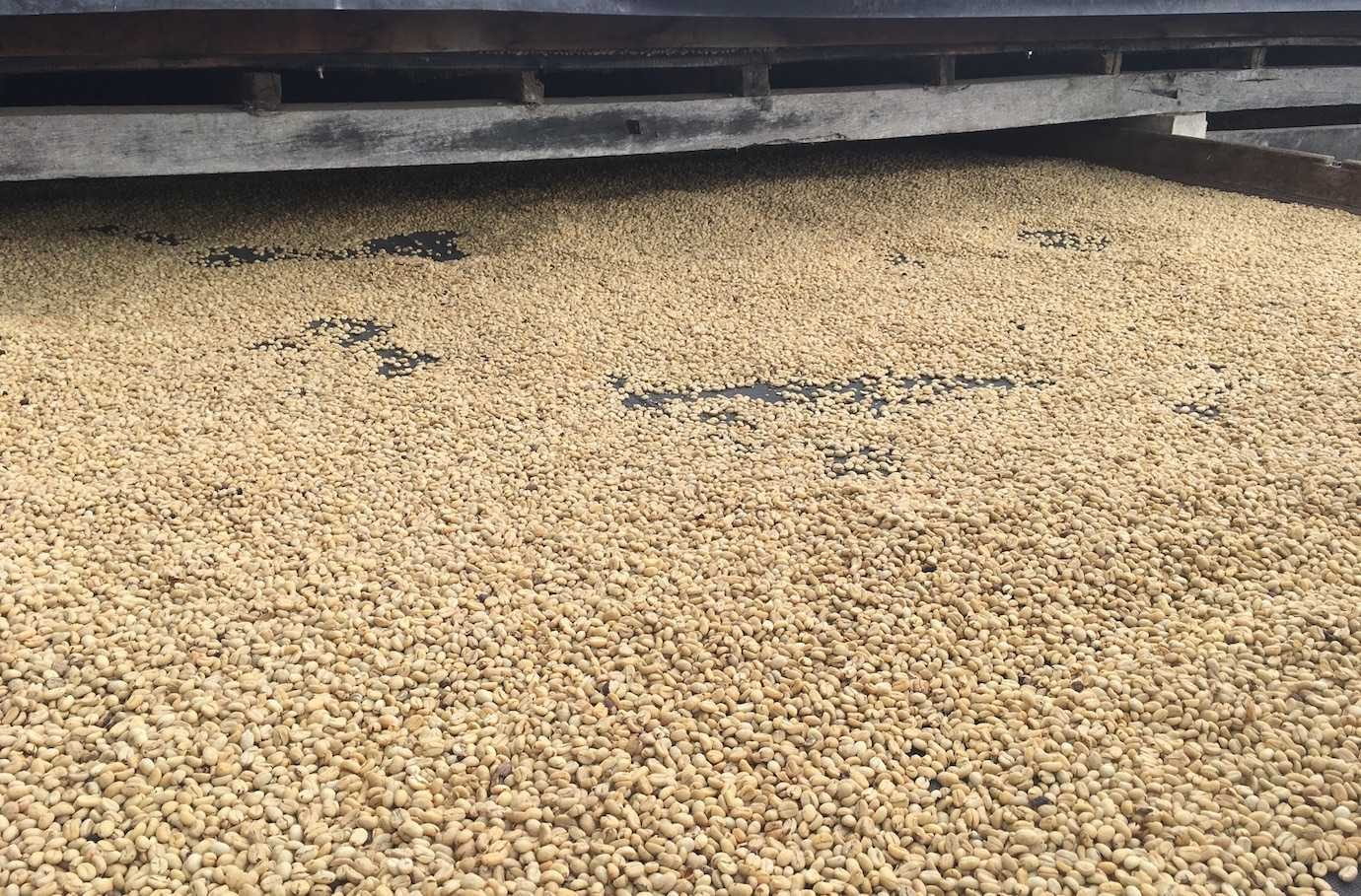
In the late afternoon, I returned to Brunch diner for the peanut butter chocolate brownie – it had rave reviews! It looks good in the picture but for me it’s more a cake than brownie! As a brownie lover, it didn’t score highly!
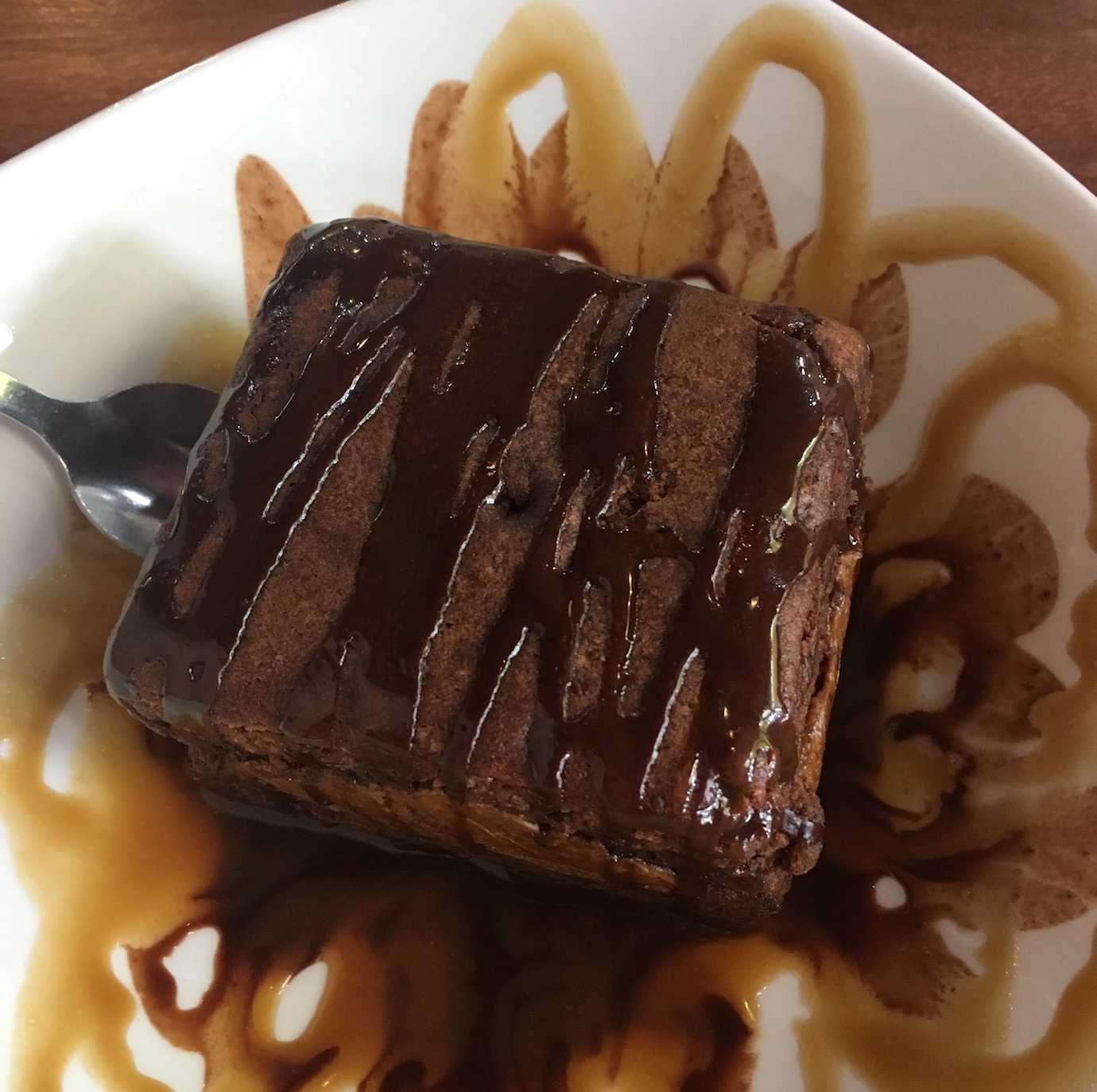
How to get to Salento
Salento is a popular destination on the backpacker and tourist circuit and is straightforward to reach. That said, the journey will usually have two parts and can be quite long depending on where you’re coming from.
If you’re coming from Bogota or Cali, you’ll first need to get a bus to Armenia. From Bogota, the bus can take between 6-9hrs and costs between 40,000-50,000COP (£10-12.50 approx). If you’d like to reach Salento the same day, I recommend getting an early morning bus so you don’t miss the Armenia to Salento connection.
Night buses are a good option for avoiding a whole travel day. I was in Bogota to collect my broken camera mid-afternoon so a night bus worked well for me.
Once in Armenia, colectivos run from the bus station to Salento every 20 minutes or so. Frequently! It takes about an hour and costs 5200COP (over £1) one way. I arrived at 5.45am from Bogota and was in a colectivo to Salento at 6am! They usually run until 8pm!
Note: You can also get a bus from Bogota to Periera. The connections between Pereira and Salento are less frequent which is why Armenia remains the most popular choice.
If you’re coming from north of Salento, namely Medellin, you have two options: one direct and the other indirect.
The direct route from Medellin to Salento is with the bus company, Flota Occidental. They have a direct bus service that runs several times daily (8am, 9am, 11am, 12pm and 2pm), costs 54,000COP and takes around 6/7hrs. Check on Flota Occidental’s website for up to date times – they can change!
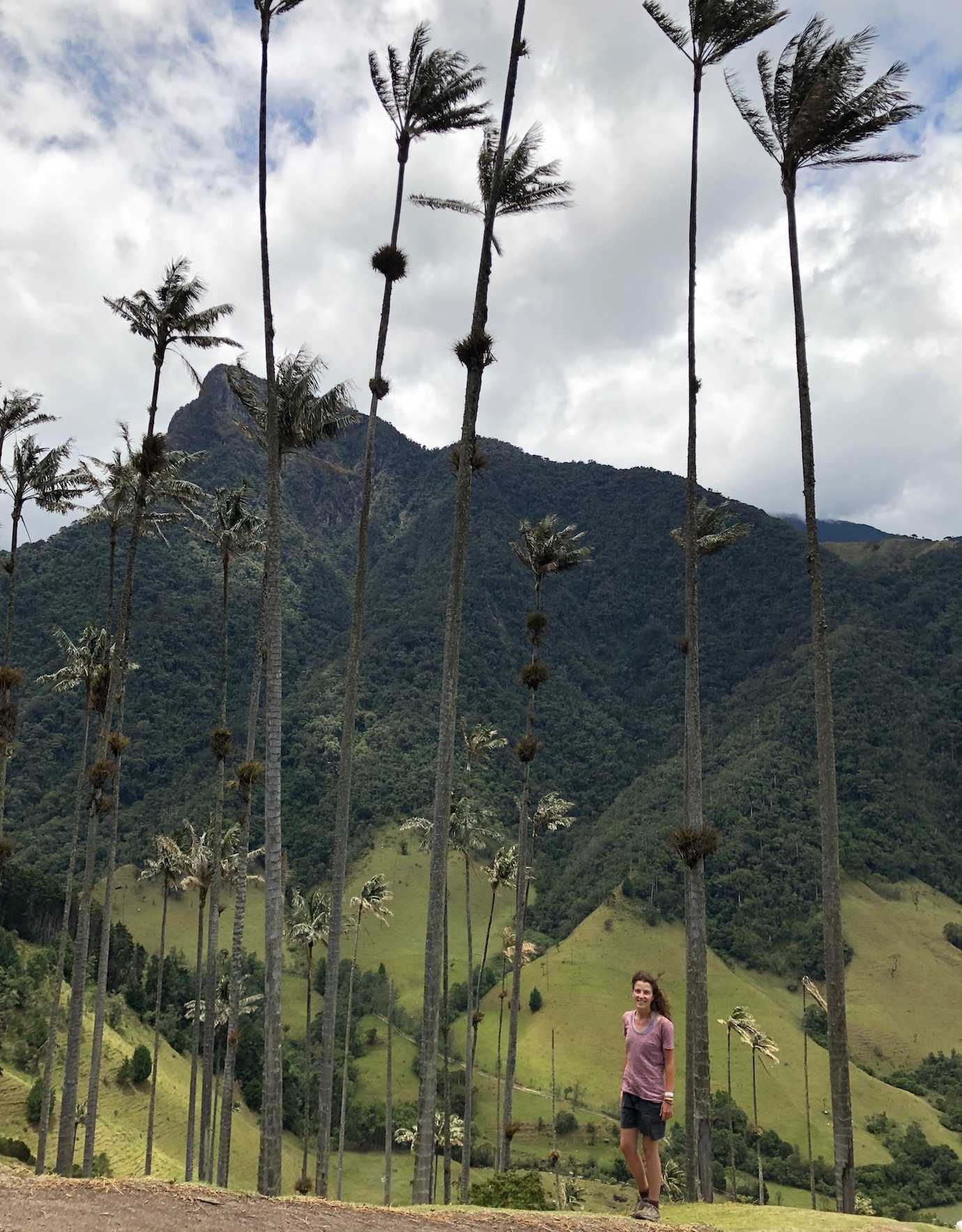
The indirect route for Medellin to Salento involves going via Armenia. Two bus companies run the route: Flota Occidental and Empresa Arauca. Empresa Arauca is a teensy bit cheaper (47,000COP vs 49,000COP – basically nothing!), but Flota Occidental have buses departing every hour (on the half hour) which is really handy!
The journey takes around 7/8hrs. I did the indirect route in reverse, so Salento to Medellin, as it enabled me to take a night bus and enjoy a full second day in Salento which, given my limited time, was important to me!
If you’re not coming from Medellin, you may be coming from the lovely town of Jardin. I’ve written a post on how to travel between Salento and Jardin. For more information, follow this link!
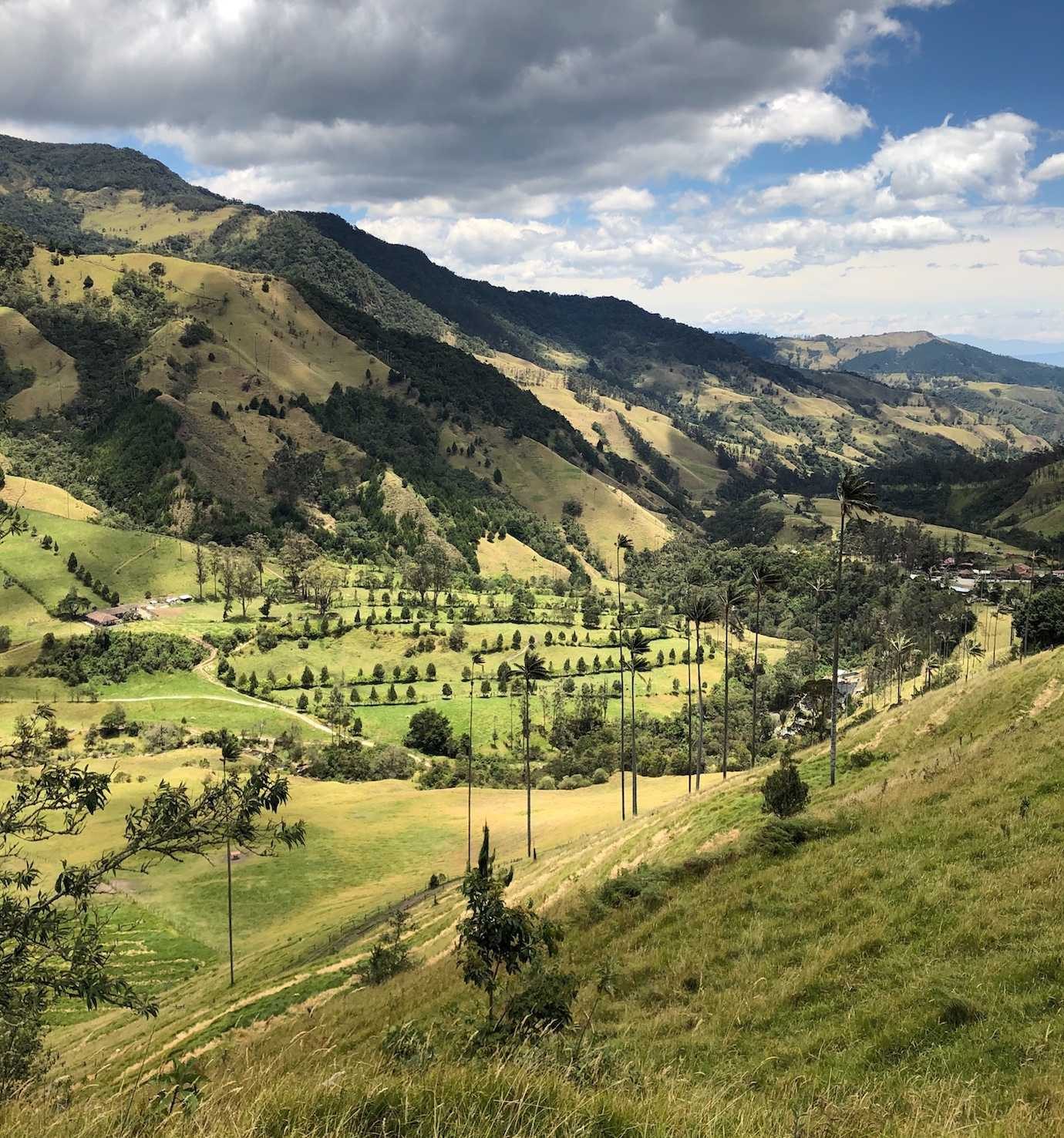
Final thoughts
I really really enjoyed Salento!
Cocora Valley was brilliant and for me a must see! I absolutely loved the wax palms landscape. I still can’t get over how tall they are and how they don’t topple over! I really recommend doing the hike and ending at the valley! It’s so worth it!
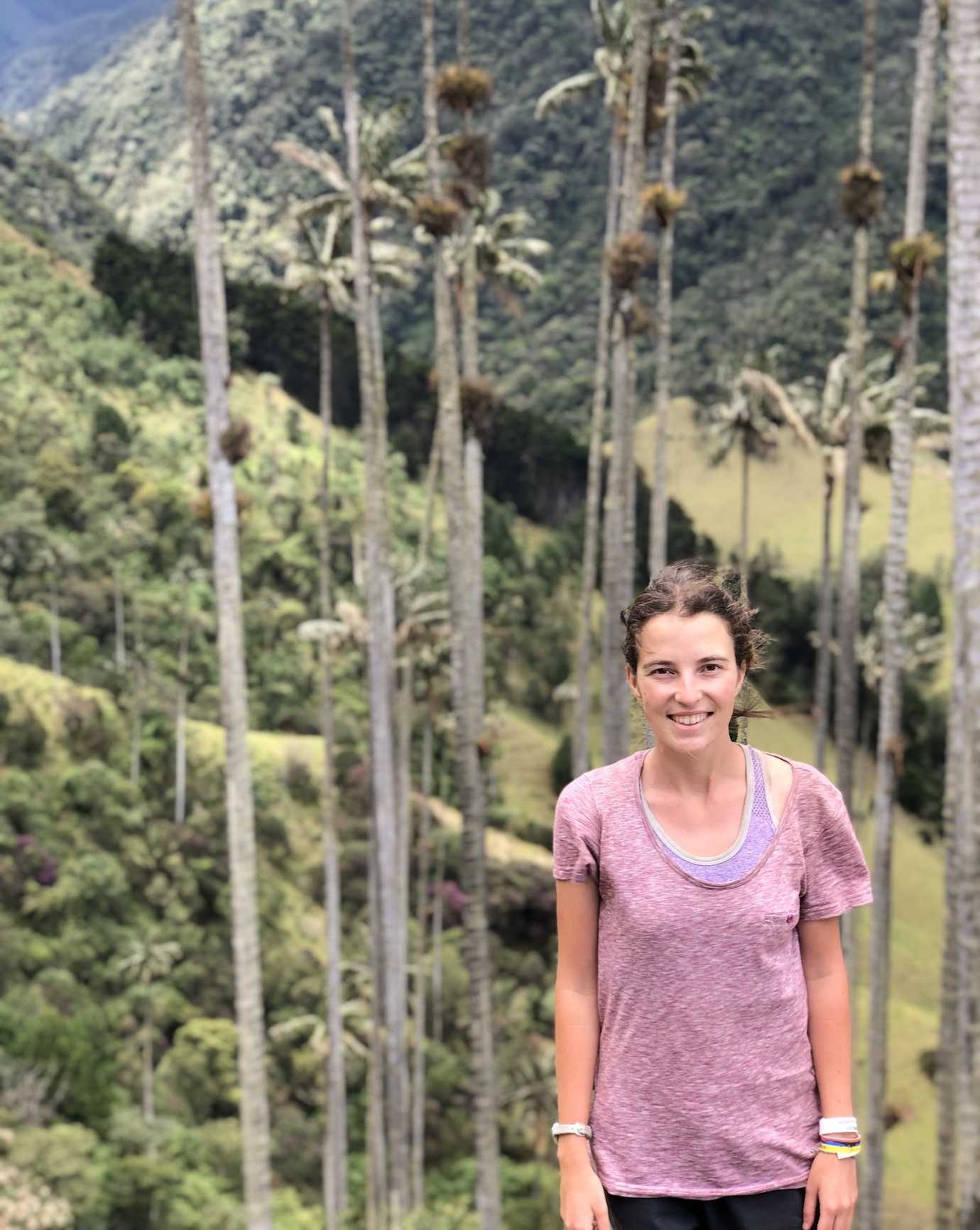
I only had two full days and one night in Salento due to my upcoming flights and other places to visit. I could have easily spent another night there just relaxing and enjoying the town or doing a short hike!
One final thing, I didn’t find Salento overly touristy. Yet if you’re looking for a less touristy coffee town to visit, I’ve heard great things about nearby Filandia.
I’m now off up to Medellin, Jardin and Guatape! The order in which I’m visiting them keeps changing so we’ll see where I end up first!